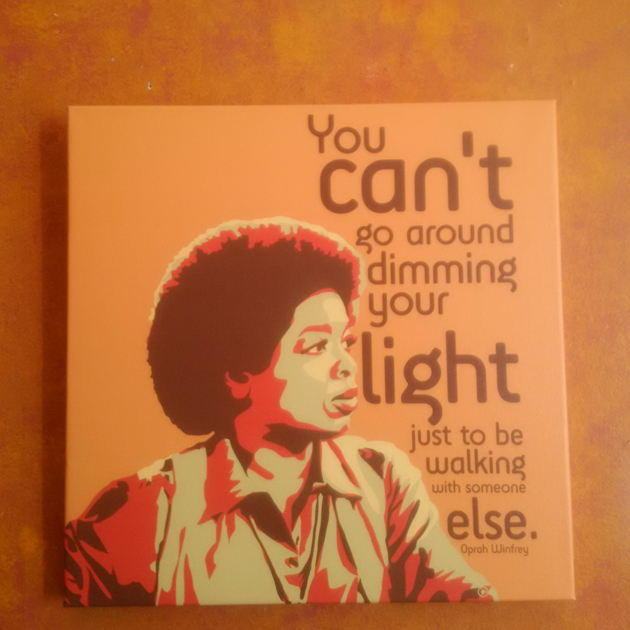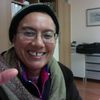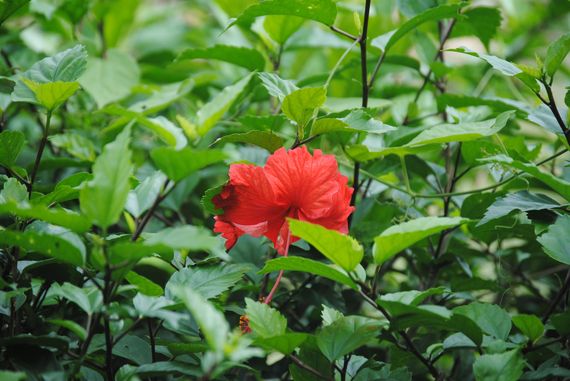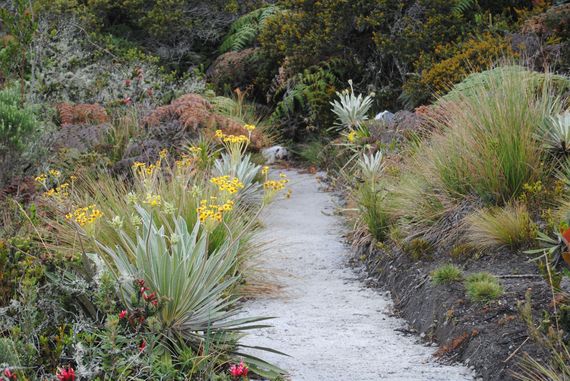Maybe Karl Marx had it half right on this one; religion can be the opium of the people. The opiod effect of happiness and bliss is present in many spiritual communities. I often come across this at retreats with majority white people where everyone is smiling, bowing, and pretending that we're all the same, blind to the difference in the color of my skin; and therefore to what I experience from this difference. This is true for many people of color in spiritual communities; I have experienced this consistently first as a practicing Catholic and then as a practicing Buddhist.
In the 1980s, Dr. John Welwood coined the phrase "spiritual bypass," to reflect the way many in Buddhist communities use spiritual practices to avoid unresolved emotional issues and psychological wounds as they attempt to wash everything with a happiness lens. I recognize it as a trait shared by many in Buddhist and other religions as " ... we try to rise above the raw and messy side of our humanness before we have fully faced and made peace with it." I reached a saturation point with this phenomena in a recent retreat where the insistence on smiling and ignoring all of who I am caused me great bodily pain. I also experienced it recently following the killing of Freddie Gray in Baltimore.
The city was on a 10:00 pm curfew. In black and brown neighborhoods people were arrested when they broke the curfew; in white neighborhoods, people received verbal warnings. I spoke with a white Christian pastor about the fear and re-surfacing of old traumas I had experienced driving home the night before. There was silence. Similarly, a black friend went to meditation with his majority white sangha waiting to hear someone share about Michael Brown's death and its reverberations in our bodies. He wanted to know that others in his spiritual family understood his pain and to feel comforted by this understanding. There was silence. These were not noble silences. He left frustrated and angry and feeling alienated by a spiritual community that had neglected his reality.

Image: Benjamin Jancewicz
Marx said that religion wants to be the "soul of the soulless world," which is an apt description for the way many communities practice spirituality today, with rites and rituals designed to create and maintain spaces of superficial joy and togetherness in an attempt to see the "oneness" in everyone, while ignoring the segregation which exists in society and our sanghas. In our communities we sit in sharing circles, we smile and sing together, and we ignore the reasons we sought out spiritual sanctuaries: to heal from the suffering inside and outside of us. This causes us to continue to feel isolated, disconnected, and wounded even while we exchange smiles and hugs. Why? Because by focusing on happy rituals alone, we are avoiding our own pain, which leads us to avoid the pain of others, making it impossible for people to truly connect at the deepest level. Clearly the celebration of happiness fills us up so when we face the world there is a reservoir to cushion and hold difficulties. But when majority white practice communities/sanghas focus their time on attaining some higher, blissful state, they are evading the reality of the everyday injustices and discomforts of being black or a person of color in a white world: personal and institutional racism. Spiritual bypass in this context favors something apparently more transcendent, something beyond the mundane investigation of the suffering of all beings. This practice of not acknowledging the reality of those who experience racial and social injustices leads to spaces of non-inclusivity and marginalization of those impacted.
This experience is not exclusive to people of color. Any person identifying in a non-powered group--queer, female, disabled, non-English speaking, poor, non-US born--feels this same marginalization when his or her experiences are ignored by those in relative power. When this happens in spiritual spaces, we are simply replicating the same silencing experienced outside spiritual circles and can re-traumatize people. Those in marginalized groups are aware of this reality and we stay away because we cannot find healing and true happiness in these spaces.
This side-stepping of the realities of non-powered groups hinders an authentic spiritual path for everyone, one which finds the transcendence right in the middle of the difficulties, the lotus in the heart of the mud. As Zen Master Thich Nhat Hanh consistently reminds us: without mud we can have no lotus. For example, it was after I was tired of this pain of having my experiences of being a woman of color ignored that I searched for a deeper understanding of why. This understanding is the lotus; one which would not have bloomed had I not been in such raw pain. And yes, it is possible to bloom at times without suffering but often it is suffering which sends us on an investigation of "why" so we can learn how to heal and find relief.
After more than 20 years in Buddhist and Christian communities, I have participated in, experienced, and witnessed spiritual bypassing. There are times I have sat in sharing circles of majority white people and felt unable to share about some racial injustice still making its way through my body. Often as folks of color we know that many white practitioners would not understand and feel targeted when we share about racial injustice; we don't want to make our white friends uncomfortable so we remain silent. This is not a noble silence. Or the times when I have attended People of Color retreats to learn that white practitioners affiliated with the community feel we're being separatist and ignoring the intention of being "one in practice": the "why can't we all just love each other" paradox.
These large and small acts of implicit bias and microaggressions are traumatizing to the body and mind. These are acts of injustice that our spiritual activism compels us to address in order to practice a deeper understanding of true love in action. As people of color, we seek all-people of color spaces to find the spaciousness, the understanding, and the love to heal and trust. These safe spaces offer an authentic presence and continue what Dr. Beverly Tatum introduces in the book Why Are All the Black Kids Sitting Together in the Cafeteria?: a place to unapologetically identify and acknowledge our collective realities. We do not find these sanctuaries in majority white spaces.
Zen Master Thich Nhat Hanh reminds us that in order to truly love someone we must understand them: "When we understand someone deeply, even someone who has done us harm, we cannot resist loving him or her." Therefore the path to understanding those who appear different from us or who our society and our practice communities have demonized for this difference is necessary. This understanding will lead to trust, love, and authentic inclusion, integrity in our spiritual communities. Spaces of authentic inclusion are spaces of justice, balanced in acknowledging everyone's reality. We bring balance inside ourselves when we understand and heal the emotional and psychological wounds inside of us, freeing us to meet the mundane directly. Because peace and justice cannot begin to manifest in the world until it is manifesting inside of us, this is critical for social justice.
Often I must remind myself that those in spiritual communities are human, bringing with them the same prejudices, injustices, and pains embedded in society. Keeping this openness in mind and heart is critical. At the same time I am mindful that spiritual communities are microcosms of society and ignoring these roots of prejudices, ignorance, and white privilege will continue to cause harm to me and others like me. In an effort to transcend this potential for harm we can act with intention to understand ourselves and those around us. We can be gentle in reminding those we see bypassing the mundane in a rush to the supramundane that life is happening right here on Earth, right in this moment, the one we inhabit together. We can figure it out!
In the past 4 years two Buddhist groups--White Awake and Buddhists for Racial Justice--were formed to address the issue of white privilege in our communities of practice. Their first Call to Action was aimed at white folks. It invited them to develop a collective intention to practice true understanding and love in order to address the history and legacy of white supremacy that is present in our Buddhist practice spaces. Their second Call to Action (due out July 2016) is aimed at People of Color spiritual communities across all traditions, inviting us to acknowledge our pain from being ignored and dismissed so that we can begin to heal ourselves.
Our places of spiritual practice are rich soil for social justice work. They do not have to be an opiate that simply bypasses suffering but can, instead, play an important role in transforming injustice. But this can happen only if we all practice authentically with reality as it is- which requires that we acknowledge and understand our role in perpetuating a white supremacist system that validates the experiences of white people and invalidates the experiences of people of color. This more authentic path of mindfulness seeks a happiness that does not harm and does not exclude. It's a truly transcendent path to happiness and justice.


